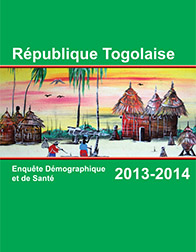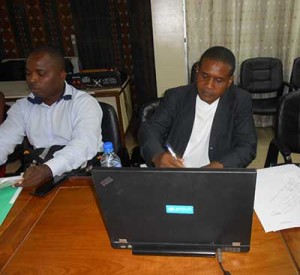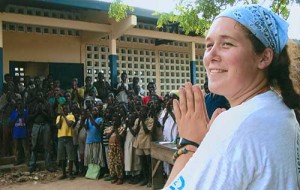Reflections on the Journalist Workshop in Togo
Tuesday began with a torrential downpour; the roads in Lomé were nearly impassable. I was certain that I was going to be late for the journalist workshop. The taxi dropped me off at the wrong entrance, and I had to wait nearly 20 minutes to cross the open-air plaza to reach the correct conference room without being drenched. This was not how my return to Togo was supposed to happen.
Since joining The DHS Program in 2010, I’ve eagerly awaited the next Demographic and Health Survey (DHS) in Togo (the last Togo DHS was 1998). I served as a United States Peace Corps volunteer in Togo from 2003-2005, working on community health and HIV prevention. My Peace Corps experience led me to pursue a career in public health, and now I had the opportunity to go back and work in Togo again.

Togo 2013-2014 DHS
DHS data is meant to guide evidence-based decisionmaking to improve the health and living conditions in countries worldwide. As such, several dissemination activities were planned to ensure the results of 2013-14 Togo Demographic and Health Survey were available to program planners and policymakers.
Journalists are a key audience because their reporting can reach both high-level decision makers, as well as individuals who can organize grass roots efforts at the community level. The staff at the Institute Nationale de la Statistique et les Études Économiques de la Démographie (INSEED), the organization that implemented the 2013-14 Togo DHS, were eager to help journalists better understand how to correctly use and report on data. They also recruited Pao GADIEL, a health and development journalist from Santé Education, to co-facilitate the workshop.

Pao GADIEL prepares for his presentation.
Despite the bad weather, there was an excellent turnout with approximately 40 print, radio, and television journalists in attendance. Kossi TETE from INSEED led an activity on how to correctly read and understand tables from the DHS. INSEED led the panel discussion on the survey results, which gave journalists the opportunity to ask individual questions about the data. Pao GADIEL presented on best practices for using data in reporting, and led an activity where journalists brainstormed ideas for future stories that would use data from the 2013-14 DHS.
Journalists were particularly interested in the data on HIV prevalence, malaria prevalence and women’s status. Maybe the morning’s deluge was a good omen, because the workshop was rousing success.


